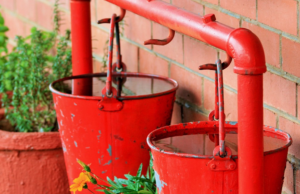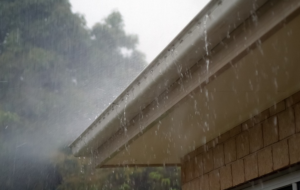Did you know that rainwater can be collected and used for various purposes? In fact, rainwater harvesting is becoming increasingly popular as people are looking for ways to become more self-sufficient and reduce their environmental impact. Also, many people have been using water tanks and their sensors in their homes. Get your water tank sensor at the Fully Tanked Up. Now, if you’re curious about rainwater harvesting or just starting out, this blog post is for you. We’ll share the basics of rainwater harvesting and tips for getting started.
Get the Essentials Ready
 The first step is to make sure you have the right equipment. You’ll need a rainwater collection system, which can be as simple as a rain barrel or as complex as an underground storage tank. You’ll also need a way to collect the rainwater, such as gutters and downspouts. Finally, you’ll need a pump to move the rainwater from the collection system to where you want to use it. If you’re just starting out, we recommend a rain barrel. They’re relatively inexpensive and easy to set up.
The first step is to make sure you have the right equipment. You’ll need a rainwater collection system, which can be as simple as a rain barrel or as complex as an underground storage tank. You’ll also need a way to collect the rainwater, such as gutters and downspouts. Finally, you’ll need a pump to move the rainwater from the collection system to where you want to use it. If you’re just starting out, we recommend a rain barrel. They’re relatively inexpensive and easy to set up.
Properly Build Your Rainwater Harvesting System
Once the equipment is in place, it’s time to start building your rainwater harvesting system. The first step is to find a location for your rain barrel. It should be placed on a level surface and away from any trees or other objects that could fall on it. You’ll also want to ensure the rain barrel is close to a downspout so rainwater can be easily collected. Once you’ve found the perfect location, it’s time to start building. Just be sure to follow the manufacturer’s instructions carefully.
Try Installing a Greywater System
You may consider installing a greywater system if you’re looking for a more advanced rainwater harvesting system. Greywater is the water that’s leftover from household activities like washing dishes or doing laundry. It can be reused for irrigation or other non-potable uses. While greywater systems are more complex than rain barrels, they can be a great way to save water and money.
Keep Up With Proper Maintenance
 Once you have your rainwater harvesting system up and running, it’s essential to keep up with proper maintenance. It includes regularly cleaning your gutters and downspouts and inspecting your rain barrel or storage tank for any leaks. Also, be prepared for the unexpected. The most common problems that you’ll see are clogged gutters and leaks. But with a little bit of regular maintenance, you can keep your rainwater harvesting system in top condition.
Once you have your rainwater harvesting system up and running, it’s essential to keep up with proper maintenance. It includes regularly cleaning your gutters and downspouts and inspecting your rain barrel or storage tank for any leaks. Also, be prepared for the unexpected. The most common problems that you’ll see are clogged gutters and leaks. But with a little bit of regular maintenance, you can keep your rainwater harvesting system in top condition.
Installing a rainwater harvesting system is a great way to become more self-sufficient and reduce your environmental impact. With some planning and effort, you can be up and running in no time. Just be sure to do your research and follow the manufacturer’s instructions carefully.
